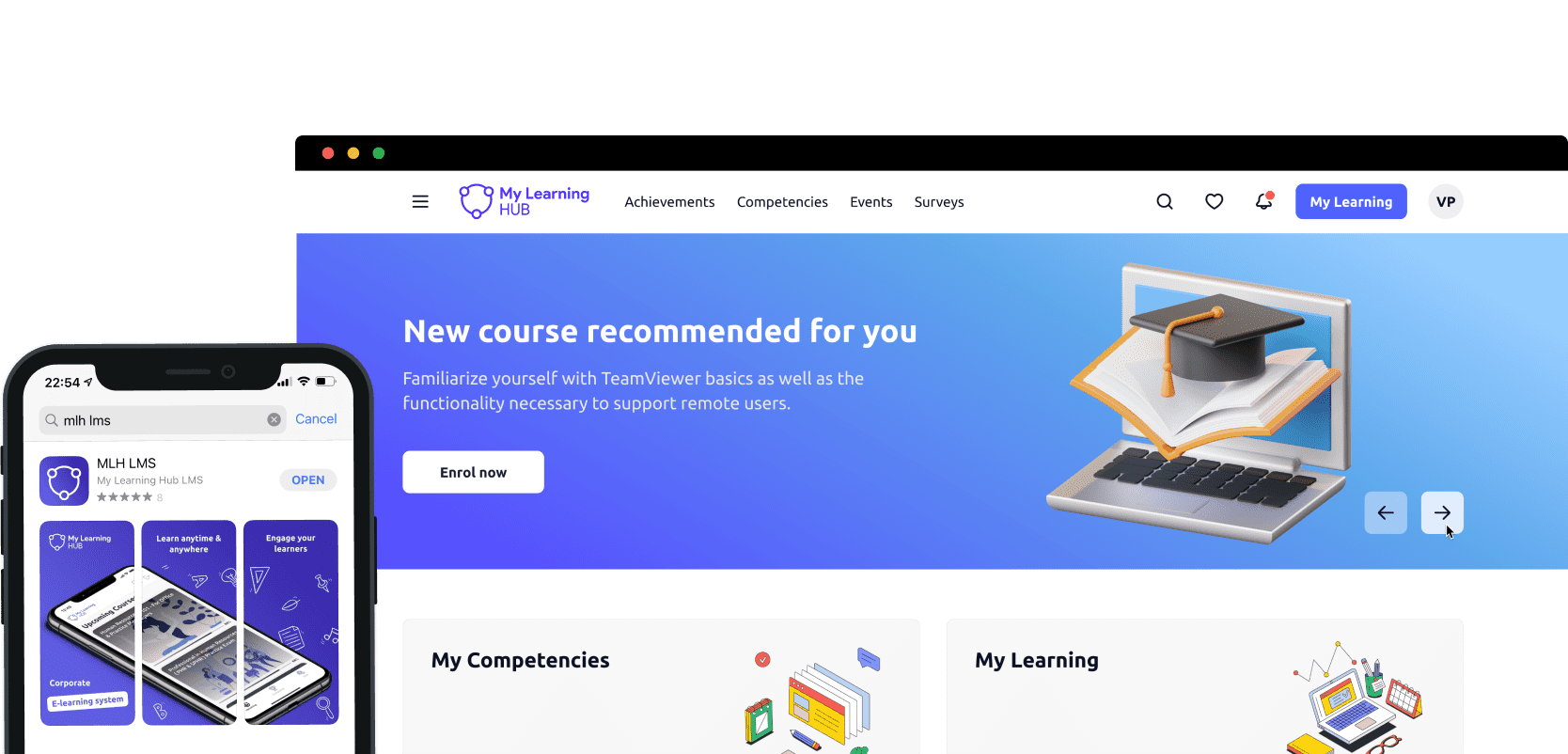
Want to take your L&D to the next level? Then peer-to-peer learning could be the answer.
Read on to discover all about peer training and how it can supercharge your L&D efforts.
What is peer-to-peer learning?
Peer-to-peer learning is when one employee teaches another. These workers are often at a similar level within an organisation.
A peer-to-peer training programme harnesses the skills and knowledge that already exists at a company – and supports colleagues to share their expertise.
Why do you need peer-to-peer learning in the workplace?
So now we know what peer-to-peer learning is, why should you use peer-to-peer learning in the workplace?
There are lots of great benefits of peer-to-peer learning:
-
A peer trainee learns new stuff and becomes better at their job
-
Employees take ownership of their L&D journey, which means improved engagement with the process
-
As per the 70:20:10 model, social learning is effective
-
The process encourages collaboration and teamwork, skills that can be applied to other activities within the organisation
-
Both colleagues involved in peer training gain insights from the other
-
The colleague who acts as a teacher learns new stuff too – like leadership and communication skills
-
L&D leaders can harness in-house knowledge to achieve training and development goals
What is peer mentoring?
Peer mentoring is similar to peer-to-peer learning. However, whilst peer training may be a one-off event, a peer mentor maintains a long-term relationship with their peer mentee.
They share their knowledge and support their mentee in achieving both their learning and career goals.
Benefits of peer mentoring
-
Because a peer mentor supports their mentee in all aspects of their work life, they can boost well-being. A mentee enjoys a trusting work relationship and knows that someone has their back.
-
L&D is a big consideration for job seekers. A comprehensive peer mentoring programme can convince top talent that your organisation is one they want to work for.
-
As per this case study, a mentorship programme can also improve staff retention rates.
-
Including mentorship as part of your onboarding strategy helps new hires feel part of the team right away.
-
Like peer trainers, mentors develop leadership and communication skills.
-
Mentees gain knowledge, skills and new perspectives from their mentor.
Examples of peer-to-peer learning
Want to incorporate peer training into your learning strategies? Take a look at these examples of peer-to-peer learning to get some ideas of how it can be done.
Onboarding buddies
Assign a peer buddy to every new hire. This ensures that new members of the team have a dedicated person to go to with questions or concerns.
You may also like your buddy peer to deliver some of your onboarding learning content, rather than leaving new hires to learn about the business on an individual basis.
A manager mentor programme
The best managers work constantly to up their game. By pairing managers together as part of a mentorship programme, you facilitate knowledge sharing and upskilling.
You also allow your mentors and mentees to share management dilemmas and ideas in a safe, confidential space.
Remote team connection
Team building can be tricky when you’re managing a hybrid or distributed team. But peer learning can help.
Because peer training requires collaboration and open communication, it bridges the gap between employees and promotes closer working relationships.
Challenges of peer-to-peer learning
There are a lot of benefits of peer-to-peer learning. But – of course – there are some challenges too.
Forewarned is forearmed. So with that in mind, here are some of the stumbling blocks you may encounter when implementing peer mentorship or peer learning strategies.
Time
Chances are the people working at your organisation are pretty busy. Employees may find it hard to fit peer training sessions into their standard day-to-day.
Be realistic about how much time an employee can commit to a peer-to-peer learning program. But also work to ingrain the idea into the company culture.
When employees (and their managers) understand the wider benefits of peer training, they’re more likely to get behind the idea and put aside the necessary time.
Sensitivity
Part of a peer trainer or mentor’s role is giving feedback.
They need to know how to give constructive criticism sensitively. Trainees and mentees need to understand that this is part of the process.
Conflict can arise when peers feel that feedback is unfair or that it has been delivered in an insensitive way.
Expectations
L&D leaders can’t simply hand over training responsibilities to employees and expect a programme to work.
Whilst there is a lot of autonomy involved in peer-to-peer learning, guidance is needed if the programme is to be at its best.
The L&D team should be clear on expectations, timelines or deadlines. They need to inform all parties as to how the peer training programme should work.
Quality of teaching
Peer trainers need proper support from their training and development team.
They may need access to quality training content or training materials to make the learning process more effective.
You may also want to consider training your trainers – helping them to develop the skills they need to share their knowledge and support their peer learners successfully.
Conclusion
As we’ve seen, peer-to-peer learning can be a really useful L&D tool. It facilitates knowledge sharing across an organisation. And the process itself helps employees to develop new skills.
However, for a peer training or mentorship programme to be successful, those doing the teaching need the right skills and support.
The L&D team should work to train their trainers, empowering them to deliver exceptional learning opportunities. Only then can an organisation experience the benefits of a peer-to-peer programme.
Want all of your learning challenges solved in one place?
My Learning Hub is a learning platform and LMS. Book a demo to find out how we can train your trainers – and support peer-to-peer learning too.
Frequently asked questions FAQ










